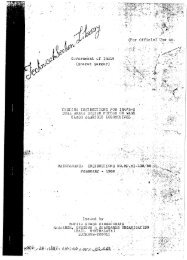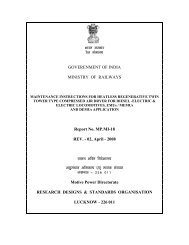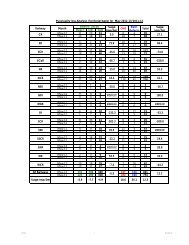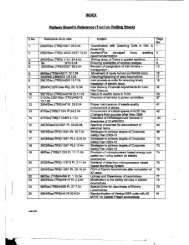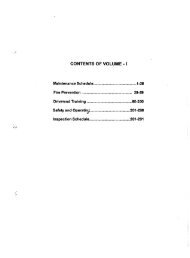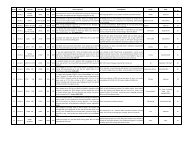RDSO's report no. TFC-77 (January 2002) of the ... - eLocoS
RDSO's report no. TFC-77 (January 2002) of the ... - eLocoS
RDSO's report no. TFC-77 (January 2002) of the ... - eLocoS
- No tags were found...
You also want an ePaper? Increase the reach of your titles
YUMPU automatically turns print PDFs into web optimized ePapers that Google loves.
As discussed earlier, <strong>the</strong> load hauling capability <strong>of</strong> a locomotive is dependant on <strong>the</strong>adhesion between <strong>the</strong> rail and <strong>the</strong> wheel.Adhesion values vary significantly under different conditions <strong>of</strong> rail Le. whe<strong>the</strong>r it is dry or'1/(:1 8nd v/ho!h(:r sllnc..Jinghas been carried out or <strong>no</strong>t. Following table shows <strong>the</strong> variationin adhosion '/8Iues for different loco under dry e·anded and dry unsanded conditions. It willbe observed that loss <strong>of</strong> adhesion could be around 10%, with sanding <strong>no</strong>t applied.LOCO DRY SANDED DRY UNSANDED'i'WDM2 0.333 0.274: I; ,-. 'NAM4 1--- ---- 0.34 0.32-1--- WAG5 0.31 0.28----_. --------------IWAG? 0.3 ci---0.355I WDG2-0.355---0.361- WAG9N.A.0.37!L- WDG4 0.42---------- '-------_. 0.38 __._----The adhesion values will be still worse for wet conditions <strong>of</strong> rail. The adhesion will be10Vierby around 15%- 20% on wet rails compared to <strong>the</strong> dry rails. Variation in adhesio<strong>no</strong>n dry rail and wet rail is shown below.t:0VIIII..c"0n:l0.45-004 -0.350.30.25 -.•..0 - 0.2:iIII0.150u0.10.05o·0 0.1 0.15 0.2 0.25' 0.3Adhesion on clean dry rail



